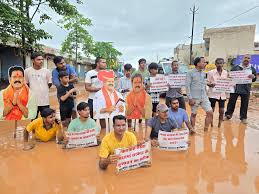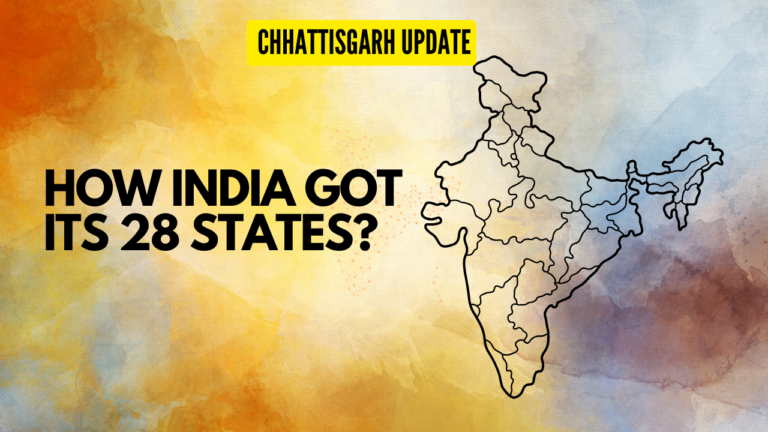Janjgir–Champa district, nestled in the heart of Chhattisgarh, India, is a place with a rich history, vibrant culture, and promising economic growth. In this article, we will delve into the fascinating aspects of this district, its history, geography, demographics, and much more. Let’s embark on a journey to discover the hidden gems of Janjgir–Champa.
A Glimpse of Janjgir–Champa
Janjgir–Champa district, located in the central part of Chhattisgarh, is known for its historical significance and rapid economic development. The district’s headquarters, Janjgir, holds a special place in its heart, with a rich history dating back to the Kalachuri dynasty. It was once a part of the Bilaspur district but gained its status as a separate district in 1998, albeit amidst some political controversy regarding its name, which remains unchanged to this day – “Janjgir–Champa.”
The Present Collector
As of now, Shri Jitendra Kumar Shukla serves as the collector of Janjgir-Champa, overseeing the administrative affairs of the district. With a dedicated team, he plays a vital role in the district’s growth and development.
Historical Significance
The Janjgir–Champa district has earned a reputation as the heart of Chhattisgarh, primarily due to its central location within the state. The district boasts a rich historical heritage, and one can find numerous temples that bear witness to its versatile history.
The Vishnu Mandir
One of the most notable historical landmarks in the district is the Vishnu Mandir, which reflects its golden past. This temple stands as a testament to the rich cultural and religious history of Janjgir–Champa.
Geography
The geographical location of Janjgir–Champa plays a crucial role in its development. It shares its borders with several neighboring districts, including Sakti district to the east, Korba district to the north, Bilaspur district to the west, and Baloda Bazar district to the south. The Hasdeo–Bango project, a lifeline for the district, covers a significant portion of its area, ensuring irrigation for the region.
Accessibility
Janjgir, the district headquarters, is conveniently located on National Highway 49. It is 43 km from Bilaspur and 152 km from the state capital, Raipur, accessible through a well-connected rail route. This strategic location enhances the district’s connectivity and accessibility, making it a hub for trade and commerce.
Administrative Divisions
Janjgir–Champa district is divided into three subdivisions: Champa, Janjgir, and Pamgarh. These subdivisions serve as administrative units and play a crucial role in governing the district efficiently.
Tehsils and Blocks
The district comprises nine tehsils, including Akaltara, Baloda, Champa, Janjgir, Nawagarh, Pamgarh, Shivrinarayan, Bamhanidih, and Saragaon. Additionally, there are five blocks or janpad panchayats, namely Akaltara, Baloda, Bamhindih, Nawagarh, and Pamgarh. These administrative divisions ensure that the district’s governance reaches all corners effectively.
Economic Growth
Janjgir–Champa district is witnessing remarkable economic growth, making it one of the fastest-growing districts in India. The district is on the path to becoming a significant “power hub” for the country, with the establishment of 52 power plants. These plants are set to supply a substantial amount of electricity, ranging from 15 to 20 thousand megawatts.
KSK Energy Venture
Among these power plants, the KSK Energy Venture stands out as the second-largest private thermal power plant in Asia. This powerhouse plays a pivotal role in meeting the energy demands of the region and beyond.
Agriculture and Trade
The district is not only known for its power production but is also a major player in agriculture. Janjgir–Champa is a significant producer of food grains in the state. It serves as a prominent hub for agricultural trade, providing a local market for fresh farm supplies. Moreover, the district’s fame extends to the mining of limestone, adding to its economic prowess.
Cottage Industries
Tradition meets modernity in Janjgir–Champa, as it is home to several cottage industries that have thrived for generations. Kosa sarees (Silk), Kansa (Bronze Utensils), and Kanchan (Gold Jewelry) trading and manufacturing have been integral parts of the district’s culture and economy.
Transportation
The district’s strategic location is complemented by its robust transportation network, particularly the railway system. Janjgir, with its well-connected rail lines, is part of the South-Eastern Central Railway’s network. It sits on the Howrah—Mumbai main line, with the state capital, Raipur, just 152 km away via the rail route. Key railway stations in the district include Champa, Janjgir-Naila, and Akaltara, with Champa JN holding an A-category status.
Demographics
Understanding the demographics of Janjgir–Champa is essential to appreciate its diverse population and cultural heritage.
Religious Diversity
As of the 2011 census, the district exhibits religious diversity, with Hinduism being the dominant religion at 98.44%, followed by Islam at 1.04%. A small fraction falls under the category of ‘Other or not stated’ at 0.52%.
Population Growth
Janjgir–Champa had a total population of 1,619,707 during the 2011 census. This population density reflects 421 inhabitants per square kilometer, showcasing the district’s vibrant communities and settlements. Over the decade from 2001 to 2011, the district experienced a population growth rate of 23.01%.
Gender Ratio and Literacy
The district boasts a balanced gender ratio, with 991 females for every 1,000 males. Moreover, it takes pride in a literacy rate of 73.7%, signifying the importance of education in the lives of its residents.
Urban and Rural Divide
Following the district’s bifurcation, it has seen a shift in its population distribution. Currently, 16.92% of the population resides in urban areas, while the majority lives in rural settings. Scheduled Castes and Scheduled Tribes constitute significant portions of the population, accounting for 25.81% and 8.58%, respectively.
Language Diversity
The linguistic landscape of Janjgir–Champa reflects its cultural richness. According to the 2011 Census of India, Chhattisgarhi is the primary language spoken by 94.16% of the population, followed by Hindi at 4.30%. Other languages contribute to the remaining 1.54%, showcasing the district’s linguistic diversity.
Cultural Heritage
The district’s cultural heritage is a treasure trove of religious sites, historical landmarks, and architectural wonders.
Shivarinarayan
One of the most popular religious sites in Janjgir–Champa is Shivarinarayan. According to tradition, it was here where Shabari had her ashram. The Ramayana narrates the encounter between Lord Rama and Sabari, highlighting the significance of this sacred place.
Annie Funk’s Residence
Janjgir has the distinction of being the residence of Annie Funk, a Christian Missionary who tragically lost her life in the Titanic. Her house, though deserted now, remains a site of historical interest. Tourists often visit the ruins of her house, connecting with the poignant history it holds.
Nahariya Baba Temple
The Nahariya Baba Temple, dedicated to Lord Hanuman, has been a place of interest for tourists and devotees alike. Its serene surroundings and religious significance make it a must-visit destination.
Other Tourist Attractions
The district boasts numerous other tourist attractions, including Madanpurgarh, Rishabhtirth, Vishnu Temple(Janjgir), Pithampur (Kaleshwarnath Temple), Chandrapur (Chandrahasini Temple and Mahanadi river), Adbhar (Ashtabhuji Temple), Samleshwari Temple (Champa), Lord Hanuman Temple (Mehandi), and Kharod (Laxmenshwar temple). These places offer a glimpse into the rich cultural and religious tapestry of Janjgir–Champa.
Conclusion
Janjgir–Champa district in Chhattisgarh, India, is a place that seamlessly blends its historical roots with a promising future. From its rich history and cultural diversity to its rapid economic growth and agricultural prosperity, the district offers a unique blend of experiences for residents and visitors alike. As it continues to grow and evolve, Janjgir–Champa remains a shining gem in the heart of India.






